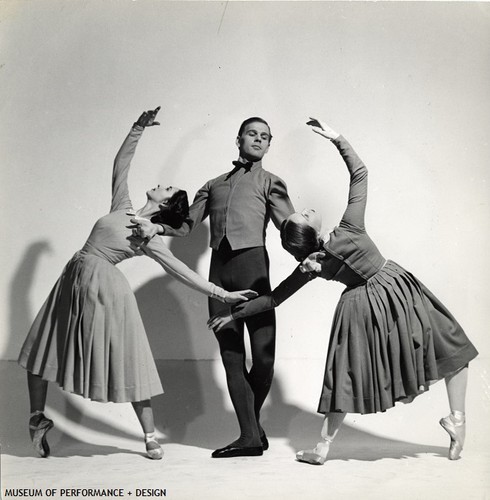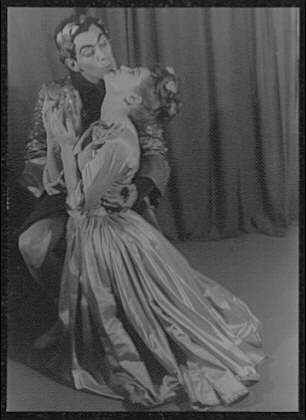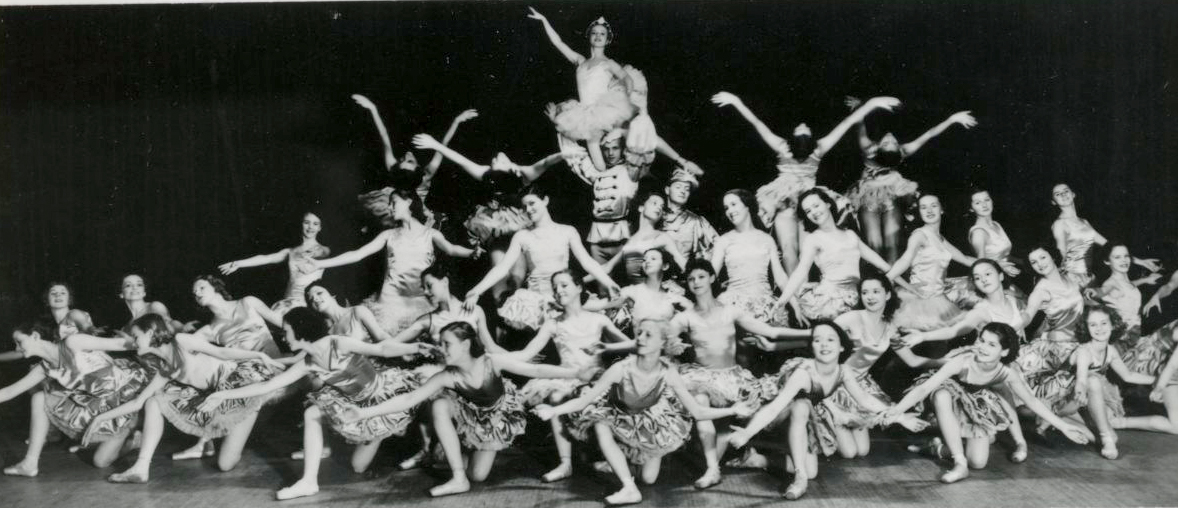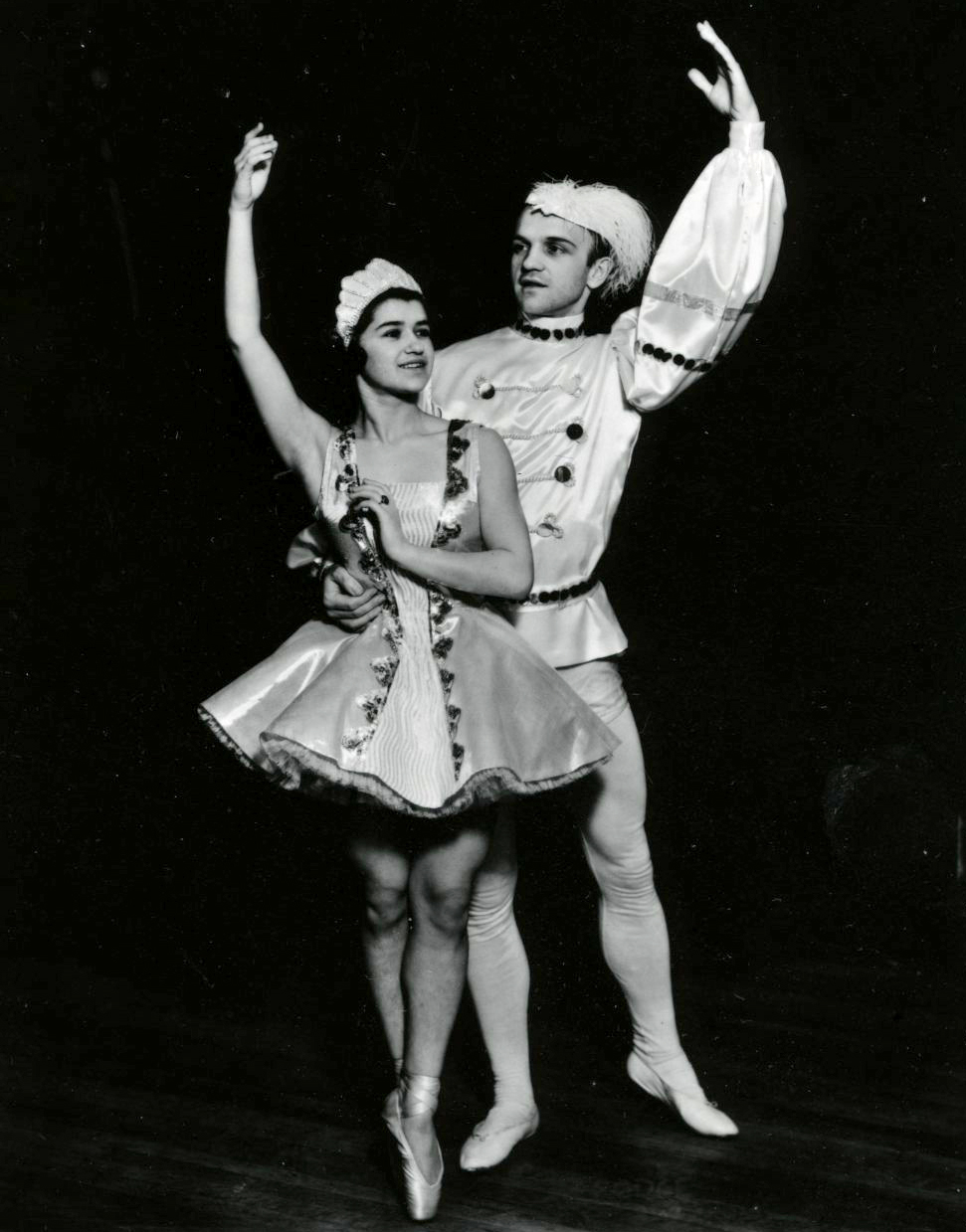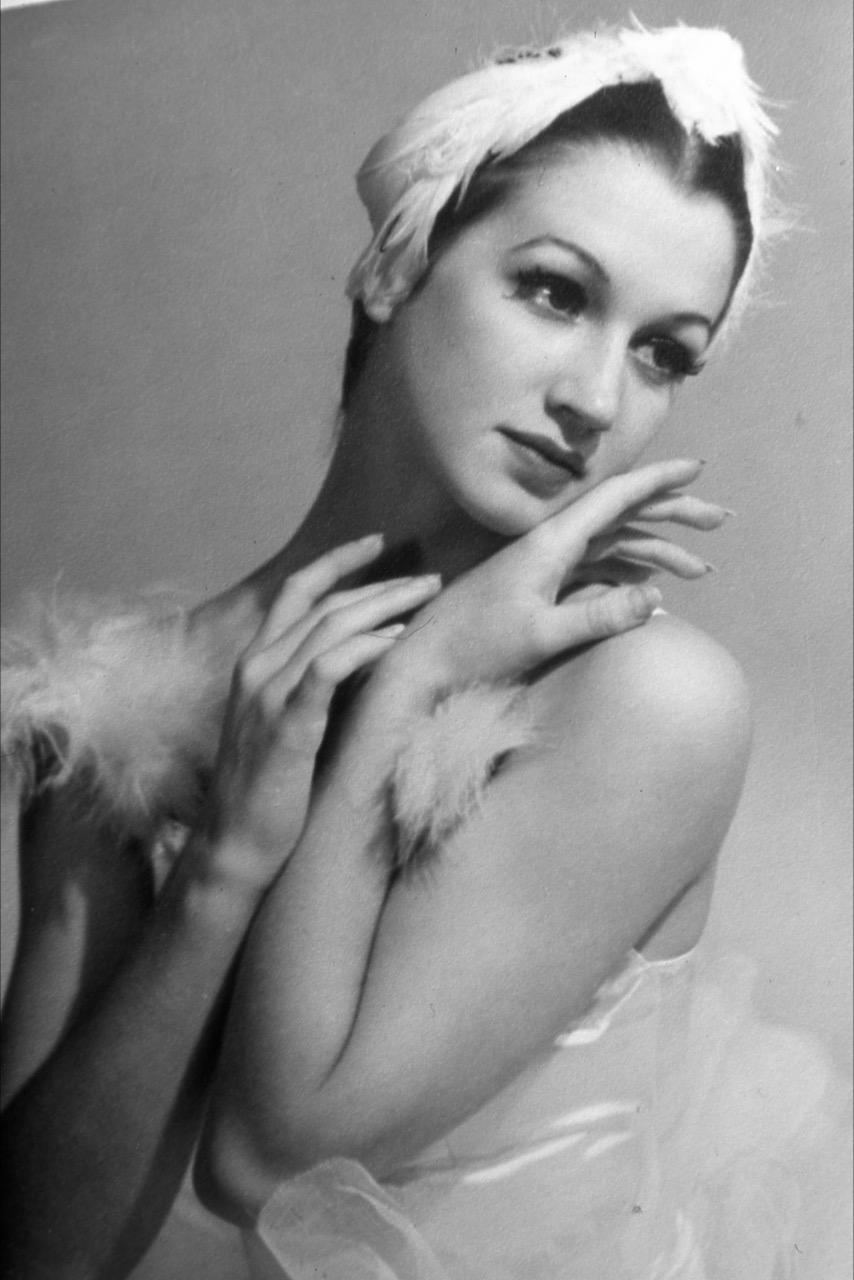Janet Reed’s stellar career began in Portland in 1934 when she danced the Sugar Plum Fairy in the first Nutcracker performance in Portland. Beloved by audiences and critics for her comic energy, fine-tuned technique, and dramatic abilities, Reed, whose strawberry blond hair and diminutive stature were part of her stage persona, played a significant role in the development of ballet as an American art form. She was integral to the establishment of two major ballet companies in the American West—San Francisco Ballet and Pacific Northwest Ballet—and danced with American Ballet Theatre and New York City Ballet in their early years, originating roles in the work of most of the important choreographers of her day.
Born in Tolo, a few miles northwest of Medford, on September 15, 1916, Reed was a descendant of Oregon pioneers. Her dance training began in Medford, but she moved to Portland when she was in grade school and received her professional training there, primarily from Willam Christensen. In 1937, after graduating from Lincoln High School, she joined a group of dancers whom Christensen took to northern California, where he founded the Oakland branch of the San Francisco Opera Ballet School. He was soon named the artistic director of San Francisco Ballet, with Reed as the troupe’s prima ballerina. She originated Swanhilda in Christensen’s Coppélia and Odile in his four-act Swan Lake. Both ballets were the first to be staged in their entirety by an American choreographer. The company toured the West and Middle West, introducing the ballets to new audiences.
In 1942, Reed went to New York City, eager to learn new repertoire and ways of moving. She compared her career to the lives of her pioneer ancestors, whom she told dance historian Tobi Tobias she believed were always seeking new frontiers. She worked with most of the important choreographers of the time, beginning with Eugene Loring. Best known as the choreographer of Billy the Kid, Loring had lured her to the city with a contract as principal dancer with Dance Players, a short-lived company he formed to dance American stories.
Dance Players folded after one season, and Reed scrambled for a living, performing with pickup groups and teaching dance, even tap, in a studio above Harlem’s Apollo Theater. She went to Ballet Theatre (now American Ballet Theatre) in 1943, where she danced until 1947, working with the great Russian American choreographer George Balanchine and Michael Kidd, Antony Tudor, and Agnes de Mille. In 1944, Reed originated the role of the Second Passerby in Fancy Free, Jerome Robbins’s first ballet that was performed with the first theater score composed by Leonard Bernstein.
The American Ballet Theatre toured the North American continent, which took Reed to Portland several times, the first in August 1943 when Oregonian classical music and dance critic Hilmar Grondahl hailed her as a star. He reviewed her the following July, when she danced in the Portland premiere of Fancy Free, praising the performance for its “candor and native wit.” “What gave the ballet an extra fillip for the Portlanders who remembered her,” he continued, “was that Janet Reed filled the role of the principal…darling with the maximum of skill and humor.”
Reed married Branson Erskine, an antiques dealer and interior decorator who was the son of the founder of Sylvania Industries, in 1946. Their son was born in 1947, and she was soon back at work in Robbins's Look Ma I'm Dancin'. In 1949, Balanchine invited her to join New York City Ballet, where she danced until 1958, originating roles in Balanchine’s Western Symphony and Ivesiana and sending audiences into gales of laughter in Lew Christensen’s Filling Station and Todd Bolender’s Souvenirs. In Filling Station, she portrayed an inebriated debutante, using the muscles of her face like a silent screen comedian; in Souvenirs, her wiggling walk and feline glare were unmatchable in the role of a vamp. Following her daughter’s birth in 1958, Reed returned to the company as ballet mistress, where she fine-tuned the performances of many dancers, including Patricia McBride, Allegra Kent, Edward Villella, and Pacific Northwest Ballet founders Kent Stowell and Francia Russell.
Reed left New York City Ballet in 1963 to teach at Bard College in Annandale-on-Hudson and to establish her own school in the Hudson River Valley. She also worked as a consultant to the U.S. State Department Cultural Exchange Program, recommending companies to represent American dance abroad. In 1974, she moved to Seattle to lay the foundation for Pacific Northwest Ballet, getting down on her hands and knees to sand and varnish the floors at the Good Shepherd Center in preparation for classes and rehearsals. Following her husband's death, Reed lived with her daughter Jane Erskine in Seattle, where she died in 2000.
Reed’s openness to new ideas, her pioneer work ethic, and her ability to reinvent herself in a variety of roles made her an ideal instrument for the choreographic creators of American ballet. Determination and talent carried her through the Depression, the privations of wartime touring, and the terrible physical toll that ballet can take on the body.
-
![Photo by Fritz Henle]()
Bobbie Howell, Lew Christensen, and Janet Reed in Homesteaders, 1942.
Photo by Fritz Henle COurtesy Museum of Performance and Design, Performing Arts Library, LC0195
-
![Photo by Carl Van Vechten]()
Janet Reed and Hugh Laing in Tally-Ho, 1944.
Photo by Carl Van Vechten Courtesy Library of Congress, 5a52573r
-
![SW 9th and Washington, Portland]()
Selling-Hirsch Building, site of Christensen's dance studio, 1913.
SW 9th and Washington, Portland Courtesy University of Oregon, pna_22507
-
![]()
Dancers trained by W. Christensen perform "Story of the Rose" during Rose Festival, 1936.
Courtesy Oregon Hist. Soc. Research Lib., 015821
-
![]()
Natalie Lauterstein and Willam Christensen in the Nutcracker Suite, Portland, 1934.
Courtesy Oregon Hist. Soc. Research Lib., 012568
Related Entries
-
![Hilmar Grondahl (1899-1984)]()
Hilmar Grondahl (1899-1984)
Hilmar Grondahl, an advocate for the arts and member of the Oregon Arts…
-
![Jacqueline Schumacher (1920-2019)]()
Jacqueline Schumacher (1920-2019)
Jacqueline Martin Schumacher, a ballerina and choreographer of ballet a…
-
![Oregon Ballet Theatre]()
Oregon Ballet Theatre
Founded in 1989, the Oregon Ballet Theatre is the largest professional …
Map This on the Oregon History WayFinder
The Oregon History Wayfinder is an interactive map that identifies significant places, people, and events in Oregon history.
Further Reading
West, Martha Ullman. "Pioneer on Pointe." Dance Chronicle 30.3 (2007): 471-493



